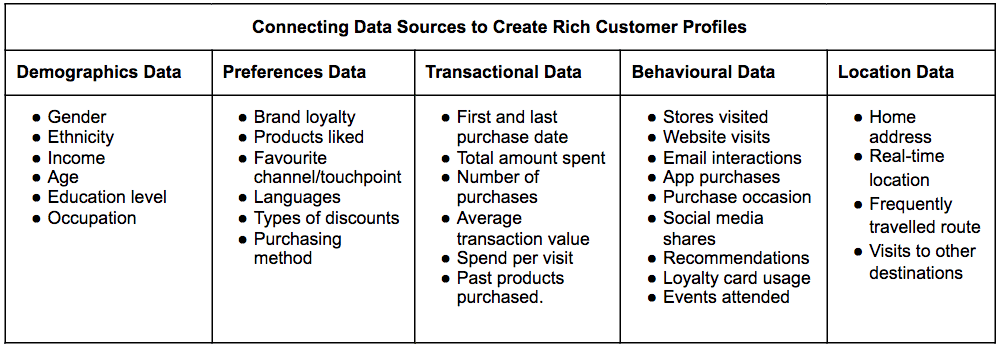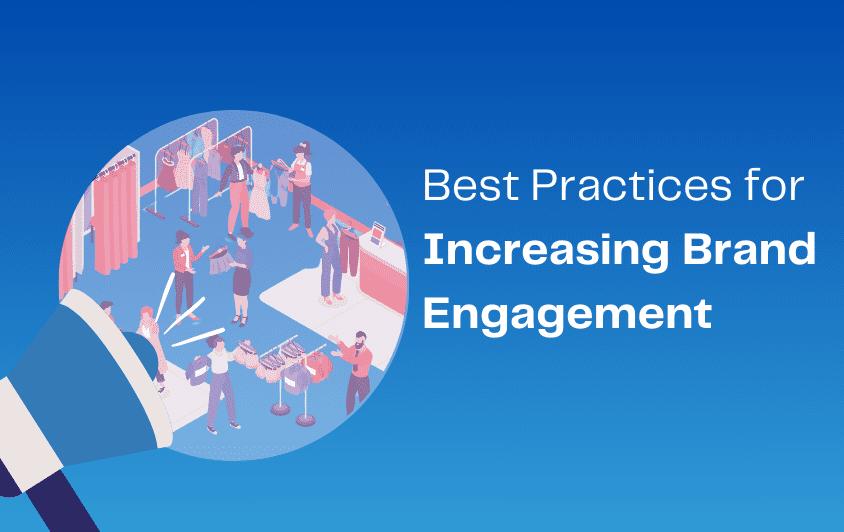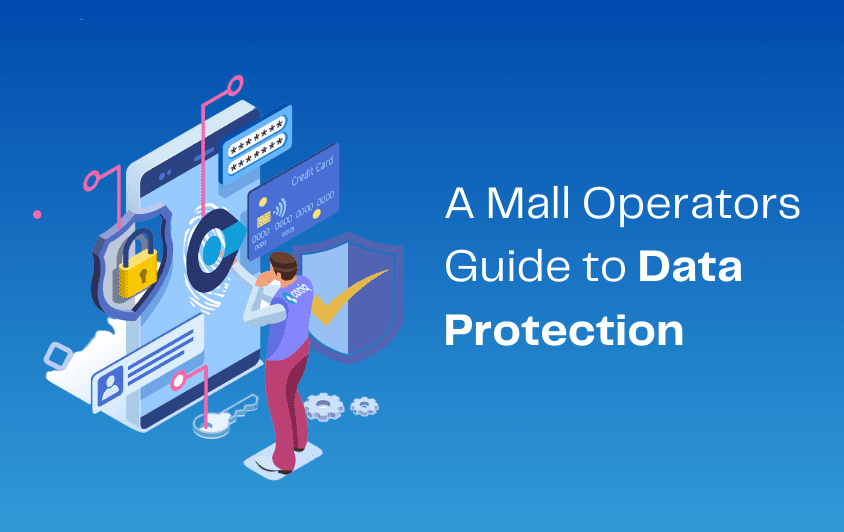Customer insight has always been an essential ingredient in designing and running successful marketing programs. Today, customer profiles are on a whole new level of importance. Thanks to digital players such as Amazon, customers expect personalized communications when visiting shopping malls and outlets.
Fortunately, when done correctly, personalization is not only a differentiator but a competitive advantage that drives customer satisfaction, sales, and loyalty. However, get it wrong, and customers stop buying.
Unfortunately, marketers still struggle with personalization because they don’t have enough information to understand their customers fully. As a result, they cannot deliver contextually relevant and value-adding experiences. This lack of insight, and engagement capability, is caused by the inability to collect and use data to create customer profiles.
Why Personalization Matters
There is a huge and undeniable shift underway that requires immediate attention by marketers: we now live in The Experience Economy.
Die Erlebniswirtschaft was introduced in 1998 by B. Joseph Pine II and James H. Gilmore. It is a thought-provoking article where the authors argue that companies must transition from selling products and services to providing experiences. Companies that embrace this transition will be able to create brand advocates also create more valuable customers.
The industry has embraced the concept of The Experience Economy, with property developers, landlords, and managers for years working to transform their shopping centers into retail destinationsDas Einkaufszentrum soll den Kunden mehr bieten, als lediglich eine Einkaufsfläche zu sein.
However, even this isn’t enough. Marketers must work harder to drive footfall and spend for their retailers. This means extending personalization throughout the entire customer journey – before, during, and after they visit. Which requires listening, interacting with, and influencing shopper behavior across digital and physical touchpoints based on the personal preferences of shoppers.
The Importance of Rich Customer Profiles
High-performing retail destinations understand the value of connecting a customer’s activities on websites, social media channels, mobile apps, and in-store to create a universal customer profile. Moreover, they understand how to use this data in a timely and relevant manner to target customers better based on shopping history, habits, and preferences.
But not all customer profiles are alike. Most organizations rely on legacy technologies such as an industry generic Customer Relationship Management (CRM) system that inhibits real-time data collection, unification, and use from multiple physical and online touchpoints. This is increasingly becoming a significant issue.
Das Versenden einer generischen Push-Benachrichtigung oder einer E-Mail eine Stunde nach einem Kauf ist zu spät, um den Kunden dazu zu bringen, ein nah gelegenes Geschäft aufzusuchen, was für Einzelhändler Umsatzverluste bedeutet. Es ist wichtig, relevante Kommunikation in Echtzeit zu liefern, die Kunden wünschen: ein speziell kuratiertes Einkaufserlebnis, das ihnen sofortige Befriedigung bietet. Die Forschung zeigt, unzureichend gelieferte Kundenerlebnisse kosten Einzelhändler jedes Jahr 102 Milliarden Euro in lost sales annually.
What is the solution? I won’t bore you with the technical details right now, but there is significant interest in technologies that combine the capabilities of CRM with a Customer Data Platform (CDP). This advanced database that ingests and integrates behavioral, transactional, and other structured and unstructured data from multiple sources into a single platform. Together it allows you to have a unified customer profile for individual shoppers.
Datenquellen Verbinden
Today, with technological advances, it’s not a choice of either/or. Modern customer engagement platforms provide the data and tools you need to truly understand, interact with and manage customer relationships in real time.
In the past six months, we have seen a major uptake from organizations to urgently create customer profiles to build higher-performing, data-centric customer engagement, and loyalty programs. The marketing leaders of these organizations recognize that data is how they will compete for and keep customers, providing the experiences that shoppers expect and building loyalty.
So, what type of data are retail destinations using to create rich customer profiles? They are incorporating data from a variety of internal and external sources, such as:

Five Tips to Help you Create Customer Profiles
Der Erfolg Ihres Kundenbindungs- und loyalty program’s success relies on the completeness, quality, and use of your customer profiles to deliver remarkable shopping experiences. To help you develop complete customer profiles, and create maximum business value from your investment, here are five tips for you to consider when building customer profiles:
1. Machen Sie Ihre Kundenprofil-strategie zukunftssicher.
A key success factor with customer profiles is unifying data from various sources, including offline and online. Many CRM systems don’t support the effective collection and segmentation of customer data from structured and unstructured sources. Ensure you have the right technology for the long term. You don’t want to spend a lot of money today only to realize you need to switch to a new platform. Therefore ensure that the technology you choose is future-proof and can support your omnichannel vision.
2. Seien Sie bei der Datenerhebung praktisch..
You don’t need to build a complete profile on your shoppers before you begin to engage, but you should focus on collecting the right type of data depending on your objectives. The data you need to acquire customers will be different from the data you need to retain or grow (upsell to) customers.
3. Denken Sie daran, Ihre Daten zu verwenden, um Kunden zu gewinnen.
Creating customer profiles is key to success, but you must use this data. Today, sending an email or push notification within the hour of a shopper spending money at one of your retailers is too late. So, ensure you’re using automation to send the relevant communications and content based on behavioral triggers such as an in-store purchase.
4. Unify your organization around your customer intelligence.
Marketing isn’t the only team that can benefit from real-time customer intelligence. Your leasing, operations, and asset management teams can create value from knowing more about what customers are and aren’t doing in your center or retailers. So, share the data to help colleagues make strategic decisions, including supporting business planning purposes and negotiating with tenants.
5. Erweitern Sie den Wert Ihrer Kundenprofildaten.
Je mehr Daten Sie Ihren Kundenprofilen hinzufügen,destohe more data you add to your customer profiles, the closer you’ll get to predicting consumer behavior. When the time is right, you may also wish to enrich your customer profiles with other data sources, such as third-party systems, and add the data from your newly created customer profiles to your core operating systems.
Coniq hilft Ihnen dabei, Ihre Kundenprofile zu entwickeln und zu optimieren. Kommen Sie in Kontakt mit Coniq und mehr lernen!






